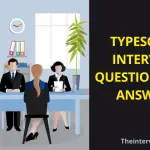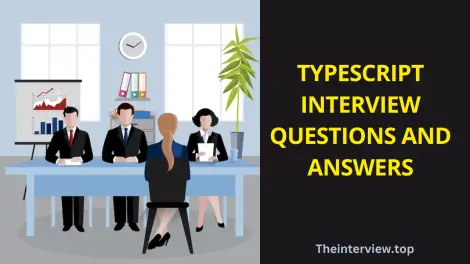If you are attending an interview for the post of the Accounts Payable, you should be ready to face a few questions that would intrinsically be focussed on your knowledge. Of course, there are a few basic questions about accounts and allied subjects, but you should also expect a few questions that look to unearth more in-depth knowledge you may have on the topic.
In case you want to succeed in the interview for Accounts Payable profile, a few questions and answers here should be helpful enough.
Questions & Answers Related to TDS in Accounts Payable Interviews
TDS or Tax Deduction at Source is one of the most critical aspects of accounting, no matter whether you are a small industry or a huge enterprise.
Some right questions in this context include:
In India, TDS has to be deducted based on the quarter of the financial year for which the TDS is calculated.
Here are the due dates:
| Quarter | The due date for TDS |
| 1st April to 30th June | 31st July |
| 1st July to 30th Sept | 31st Oct |
| 1st Oct to 31st Dec | 31st January |
| 1st Jan to 31st March | 31st May |
A – Filing a TDS Return will involve checking the flowing documents:
- Deductor details – This involves the company who is deducting the TDS
- Deductee Details – The parties of which the TDS is being deducted.
- Challan Details – The details of monthly TDS challans filed
The TDS Return can be filed through the help of your tax advisor or a software solution. You would need to fill up a few necessary documents depending upon the type of deductee.
There are cases where you find a few discrepancies in the TDS return. In such a case, you would need to download the TDS Conso file from the TRACES website. The TDS Conso file is one of the excellent options if you are looking to revise your TDS return.
You would need to download the file from TRACES and then feed it into your taxation software for filing TDS Return.
Recommended Reading:
- Best Examples of Carrer Aspirations to write in Resume
- How to Answer – What Skills and Experience Can You Bring to This Role? (Interesting Examples)
Interview Questions & Answers Related to Accounts Payable in SAP
Most of the large organizations are using SAP as their ERP software, thus SAP has become one of the essential elements of Accounts payable, and that would explain why the questions revolving around SAP and allied aspects.
T Code stands for Transaction code in SAP. These codes help you work with the creation of several documents in the sphere of your accounting task.
The T-Code for creating a PO in SAP would be ME21N. You just need to enter the T-Code and then enter the Vendor’s name. Enter all the details you want to include in the Purchase Order document. The PO will be populated with all the details into the record.
The Transaction code for the release of PO in SAP would be ME29N. You can check the codes such as ME23N and look under the status find the latest approval status.
The T-Code for approving a PO in SAP would be ME28.
GR-IR is an intermediary clearing account on SAP, and this involves the goods and invoices in transit. It is actually a provisional account. When you receive goods from a vendor, the entry is made for the inward account of the goods. Some of these goods may be damaged, or there maybe a few discrepancies in the goods or invoices received.
Once the goods are received, the amount in the GR IR account is transferred to the actual vendor account. Do note that the entries in the GR IR account may not always match with those in the actual vendor account.
Other Accounts Payable Questions & Answers
Now let’s discuss some other generic interview questions and answers related to accounts payable profile.
Verifying an invoice is an essential factor or process to ensure that you are paying the correct bills. For the verification of an invoice, you will need three basic documents – the purchase order, the vendor invoice, and the goods received report.
You need to compare all those three documents and make sure that they match. In case you find the three documents match, it would be an indication that the verification is successful. You will need to check the accuracy of the goods received and discover if any of the goods have been damaged.
Another point would include checking the bank account to find if the payment can be made and whether any credit period is available.
This question can best be answered based on your personal experience. Make sure you have reviewed your experience with the existing job or any other existing job. You can specify any of the details and share your experience of how you resolved it.
This can include an incorrect amount, incorrect date, or incorrect account code. These can be much minor, and does not affect your finances, but can create an issue at the time of tax reviews.
If you find a debit balance with a regular vendor, you can raise a credit note. You can ask the vendor for the direct payment of the amount back or choose to adjust the extra amount in future purchases.
However, if it has been a one-time vendor or someone with whom you deal quite sparingly, it would be advisable to follow up with the vendor and ask them to pay back the extra amount paid. In case you fail to receive the debit balance, you will need to write it off.
The 3 Way Matching is all about comparing the three documents – Purchase order, receipt of items or packing slip, and Invoice.
The process involves avoiding the payment of the incorrect or wrong amount. The significant elements would include –
- Match the price on the invoice with that specified on the purchase order.
- Match the quantity of the items received against those ordered in the purchase order.
- The number of items or quantity received as in the packing slip or GRN with the invoice quantity.
The 3-way matching helps you safeguard the assets of the organization.
EFT stands for Electronic Funds Transfer. This involves an electronic exchange of the money from one account to another, either within the same financial institution or different institutions. The transaction is completed through the means of computer software and the internet. The same payments, if made to the foreign nations, are called SWIFT payments.
WIRE is a form of EFT money transfer. Wire transfer is when the transfer of money is made from one person to another. It can also be made through the cash in the office or other modes.
A Pro forma is an invoice that is quoted as a possible price. The Pro forma invoice is only a suggestive price quote and would be subject to change. The accounts payable services will not pay the amount specified on the Pro forma invoice. It is the preliminary bill of sale and is sent to the client even before the work is completed. It works as a commitment that the products and services specified in the invoice will be delivered.
It is just a preliminary document and will not be used by the Accounts Payable department for any sort of payment.
From a customer point of view, a debit is an amount that moves out of the account of the customer. On the other hand, credit is an amount that comes into the account of the customer.
In essence, a credit is an income or cash deposited into the account. A debit is an entry that will show an expenditure or cash payment.
The terms credit and debit can be extremely confusing if you are not an accountant yourself.
When the bank receives an asset, it receives a credit. In the same manner, when the bank loses an asset, it receives a debit.
So when you see a deposit in your bank statement, it is a debit balance from the banks point of view, whereas, in the personal account, one considers it to be a credit.
In a conglomerate, several companies would have been formed for different businesses. These companies might also be doing business transactions with each other.
Thus, at the end of the accounting period (generally at the financial year-end), the ledger balances of inter-companies should be reconciled and settled.
Intercompany reconciliation is one of the key focuses of the auditors, thus it is better for the accountants to reconcile and settle them before the commencement of the audit.
The Goods purchase records can be either in cash or credit. Depending upon the exact entry, academically, you can make the following entries:
If in cash:
Purchase Account – Dr to xx Cash account
If you are opting for credit,
Purchase account – Dr xx to Supplier account.
However, in the ERP environment, several transactions take place:
- At first, a PO is raised; there is no accounting entry that gets passed when the PO is raised.
- Then goods are received:
- When the goods are received, then warehouse owner credits good received and debits the inventory
- Then the invoice is booked:
- When the invoice is booked, then the accounts team debits the goods received and credits the supplier. Here the goods received account gets closed
- Then payment is made:
- When the payment is made, the supplier account is debited and the cash/bank account is credited. Here the supplier’s account gets settled.
- Then goods are consumed:
- Only when goods are consumed, the expense hits the P&L account. Here the P&L or Consumption or Purchase account is debited, and inventory is credited.
So in the end, the final entry which remains is Purchase account debit to cash, same like the academic entry. However, there are several other entries in the ERP scenario which get booked as a transaction trail.
The Closing Thoughts
If you really want to rise above the competition and clear your Accounts Payable interview, the above specific questions and answers should ideally be useful enough. The above interview questions should ideally provide you an insight into how to answer those interviews and gain confidence in achieving the best results.















